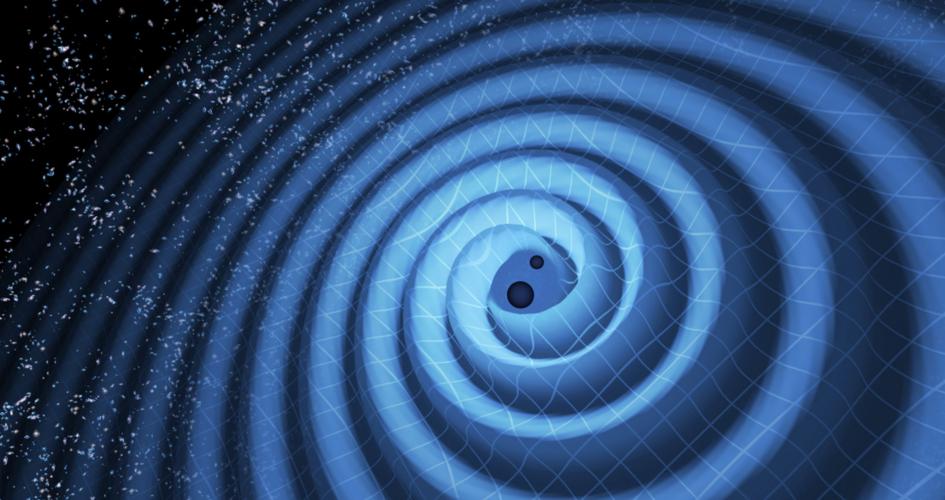
The age of gravitational astronomy has been ushered in with LIGO’s detection of three black hole merger events. The first signal came from a pair of black holes, around 30 solar masses each. The discovery was revolutionary as it provided the last piece of evidence confirming Einstein’s Theory of General Relativity. But it also had three physicists in our department questioning how common black holes of these masses are, and how often mergers occur. In research led by Oliver Elbert (who successfully defended his PhD thesis at UCI), and co-authored by two professors from our department, Department Chair James Bullock and Manoj Kaplinghat, entwining the fields of galaxy-scale astronomy and stellar evolution astronomy, it was estimated that the Milky Way hosts as many as 100 million black holes! You can find their paper, here. And the wonder doesn’t stop there—let’s take a further look at their research.

I’m going to discuss metallicity here, so allow me to explain what that means in an astronomical context: metallicity is a measure of how much stuff other than hydrogen and helium (the first elements forged in the Big Bang) a star has. Any element that isn’t hydrogen or helium is considered a metal in astronomy. With that, let’s talk about what type of galaxies massive black holes tend to form in, and why. It turns out that high-mass black holes are more likely to form in dwarf galaxies than in large galaxies. Dwarf galaxies host stars that have lower metallicities than large galaxies do. This is because dwarf galaxies don’t typically contain much gas, and supernovae that expunge metals aren’t as common, so not a lot of metals are available for star formation. Large galaxies, on the other hand, may be actively forming stars with supernova bursts increasing the metal abundance in that galaxy. That’s why we find more metal-poor stars in dwarfs compared to large galaxies.

I found it counterintuitive that massive black holes are more likely to form in dwarf galaxies, so I spoke with Oliver Elbert about it, and he clarified it for me: metal-rich stars lose more mass over the course of their lifetimes than metal-poor ones do; this results in the metal-rich star forming a smaller black hole than a metal-poor star that began its life with a similar mass to the metal-rich one! For example, for a star with a similar metallicity to that of the Sun (the Sun contains about 2% metals) to form a 30-solar-mass black hole, the star would need to begin its life with the mass of about 90 Suns; conversely, a star far poorer in metals than the Sun may only needs to be 33 solar masses to form a black hole of the same mass. Because the metallicity of a star has a large bearing on how massive a black hole it forms will be, you’re more likely to find a dwarf galaxy forming really massive ones. James Bullock is looking forward to the things that can be learned from this research. He said “One of the goals of this work was to use what we know about galaxy formation and stellar evolution to frame the open questions as cleanly as possible. The fact that we have black holes this large is not at all unexpected from that standpoint. What we’re now hoping to learn is what makes them merge and how do those mergers distribute themselves among galaxies of various sizes.”
Animation of a simulation of a black hole merger. Credit: Simulating eXtreme Spacetime (SXS) project.
Now, merger timescales!! Wait, what’s that? Well, it basically refers to the length of time it takes black holes to merge, and consequently, how often mergers should happen. The team tested two possibilities: black holes that take really long to merge (10 billion years), or black holes that merge really fast after they form (less than 5 billion years). To match the data from LIGO, if black holes take extremely long to merge, then we’d need the fraction of black holes merging to be pretty small since, well, 10 billion years pretty close to the age of the Universe (which is 13.8 billion years), so they can’t be merging quickly, or we’d have detected more mergers! If, on the other hand, they merge really fast after they are formed, then we’d require a larger fraction of black holes to merge to match LIGO data. Manoj Kaplinghat stated “We show that only 0.1 to 1 percent of the black holes formed have to merge to explain what LIGO saw,” where it’s 0.1 percent if mergers take really long, and 1 percent if they merge quickly. He further said “If the current ideas about stellar evolution are right, then our calculations indicate that mergers of even 50-solar-mass black holes will be detected in a few years.” The team also looked at neutron star mergers. While they estimated raw merger rate densities, they require more information to get a good handle on merger rates. The upside to neutron star mergers is that they are expected to produce gamma-ray bursts, so they can be localized. Black hole mergers, on the other hand, don’t produce any electromagnetic radiation, and are solely detected by the gravitational waves they produce. The lead on this research, Oliver Elbert, said “For me it was very cool to take results from these two very separate fields of astronomy and use them together to learn more about the Universe. As we start detecting more black hole and neutron star mergers it’ll be really interesting to see how well we can constrain aspects of galaxy astronomy using this methodology.” LIGO, we’re rooting for you.
Post by Sophia Nasr, graduate student working on her PhD in Cosmology at UCI.
